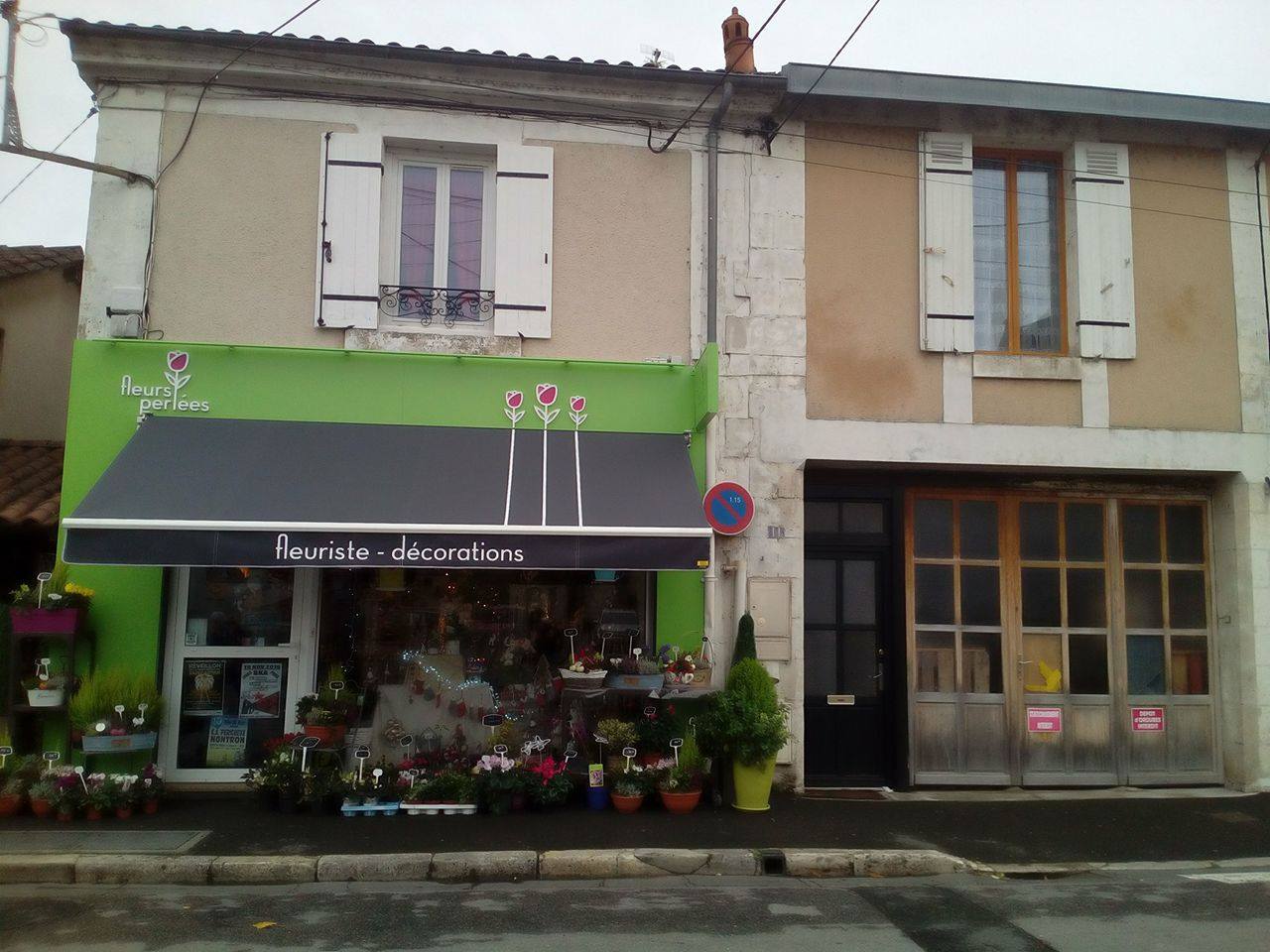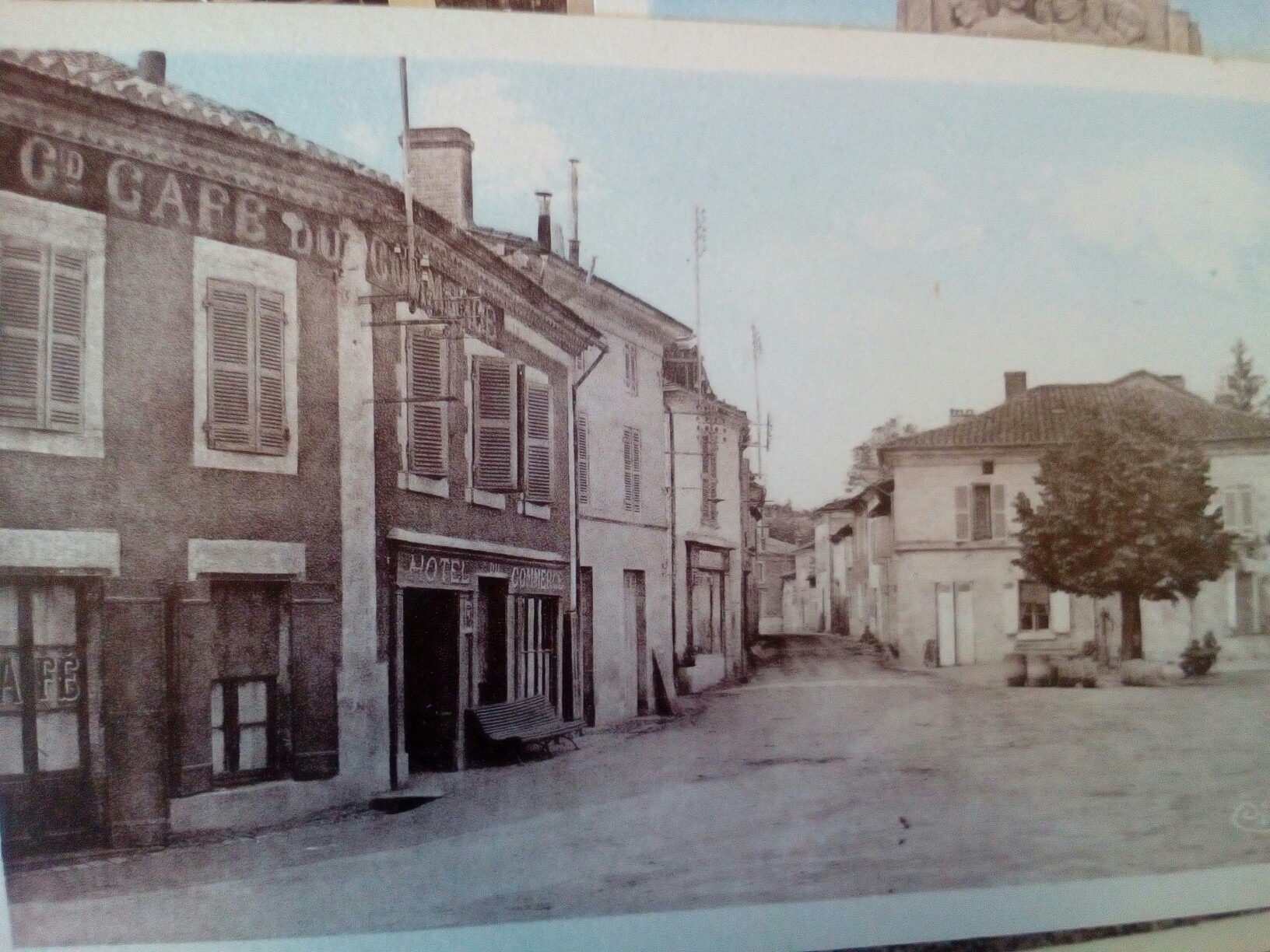I sat inside the train. I was trying to write in my flimsy tiny green notebook, on whose cover I had written “Heidi’s adventures in France 11/17 to 11/21/2016.” I had written the second part of the date the day before, as that’s when I decided my date of departure. I was trying hard to write about the past few days.
I was leaving the small French town where my grandmother grew up. The town of Saint Astier had not changed much since she lived there as a little girl. I had seen the difference in the postcards in the tiny coffee shop. In comparing a postcard from the 1940s to one from present day, there was little difference other than the color in the photograph. There was a main central church tower that sat on a hill with small streets radiating outwards. A river with dams and fields surrounded the town.
Before I left for my study abroad program in Berlin, I received an envelope of letters from my grandma. The nine letters contained information about where she grew up, as well as other family history. It was extraordinary to receive the letters in the mail, as I didn’t know the details of her past. I carried the letters around everywhere on my trip, highlighting and underlining certain parts when I showed them to others.
I left for the southwest corner of France in a state of confusion. I only knew the names of various towns where she used to live, with no idea of where to stay or how to get to them.
I ended up lost in a convenience store, which was connected to a coffee shop, trying to get my cell phone functioning. I told the clerk that I was searching for the location of my grandma’s old residence. No one understood English; then he asked an older man who entered the store. I showed him the letters, and he brought them to group young adults sitting in the coffee shop. Using the maps and translator functions on their phones, the group of us set out on a short walk to the house where she used to live. I knew we had arrived when I noticed the street name was correct and that just across from us lay the girls’ school. It was a surreal feeling being in the right location.
We continued to a tiny water pump mentioned in the letters that my grandma had used as a child. Next, we located a memorial that my grandma had been at for its original dedication.
The elderly English-speaking man from the store was still with me. He offered to walk with me, bring flowers to the memorial, and go to two of the towns where my grandma lived prior to living in Saint Astier. These places were the most important locations in my journey; I felt that once I’d seen them, my journey could be over.
It took us the majority of the day to travel to Bardenac and then to Rouffiac. There was a sense of excitement as we set out, seeing the countryside rush by in the window. In the first town, they lived on top of a small hill in an isolated house that my grandma called a castle. “Just ask people where the castle is,” she said. In reality, the house did not really look like a castle, but seeing it helped me imagine them living there as a young family.
They lived outside of the second town on a little farm. It was impossible to find the farm, but it was still meaningful for me to see the town.
It meant a lot to journey with someone who lived in the same place and experienced the same culture as my grandma. He took a deep interest in her story and how the town had protected her. He asked me how healthy my grandma was, and upon learning that she wasn’t too old, he told me that she really must come and visit.
My new friend told me that he was a writer of strong, emotional pieces. For instance, he would take our story and twist it: maybe there would be a tragic car accident in it? He told me that I must write down what I was experiencing immediately, so that I wouldn’t lose the emotion of the past few days.
So that’s what I was trying to do as I sat on the train: write. I simply wrote about how I needed to write something down, about how I had searched frantically for something in my pocket that I could not find, how I wished I could stay longer, how meaningful the elderly gentleman’s help was.
In those few days, I was forced to truly experience life. Every moment was so enthralling. I was fully engaged in what was going on around me, rather than my usual state of hiding from the world. Sometimes I would read about interesting events such as this, but they never felt real. This trip brought about a new way of thinking for me. Documenting my journey in my notebook was a way for me to bring what I felt to life. The notebook, the postcards, the letters she sent me, were all tangible reminders of my journey.
By seeing the locations of her childhood, I realized that by going back and seeing them as her grandchild, I was doing something of significance. There was a deep, underlying importance to what I was seeing and doing. It was a connection with the past, with my family, and with the culture that had taken care of them when they really needed it.
I could tell how happy my grandma was that I visited. This was a great opportunity to connect with her, as I called her up multiple times asking for help and clarification. I could sense the emotion she felt towards the places of her childhood, where she lived as a refugee, forced to move between these towns in the middle of the night. They had to move so much because, as she said, “they were Jewish and it was World War II.”
Heidi Goldstick is an Architectural Design student who participated in the CHID Berlin program. She doesn’t have much experience writing but hopes that you get some enjoyment out of reading her piece.



Comments are closed.